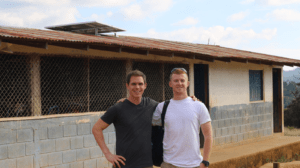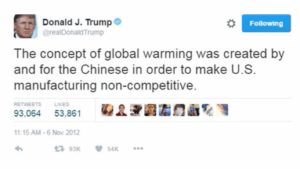20th Mar 2017

Cole Anderson graduated from Appalachian State University in the spring of 2014, and following his graduation, joined students from ASU and volunteers from USI on a trip to Nicaragua to work on solar projects in communities there. He specifically worked in San Ramón and helped install solar panels on a local art center and community center. He now works as a project manager for Yes! Solar Solutions. This interview is edited for brevity.
USI: What made you decide to go to Nicaragua?
Cole Anderson: I was ready to do a little bit of traveling. I actually did get a couple of credits out of it as well. Most of it was that I had a lot of professors who I was involved with and they were telling me about it and it seemed like a pretty cool opportunity. I actually majored in renewables, so that seemed like a good way to get some real-world experience doing some installation stuff while also getting to do some traveling.
USI: What was the most memorable part of the trip for you?
Anderson: The first week we were there we stayed at a place called Finka Esperanza Verde. We worked on some projects while we were there but it was memorable because it was my first hands-on experience to get to do some solar stuff and micro-hydro outside of the classroom, and actually see how it was benefitting this eco-lodge. This place was completely off the grid and run by renewables and had a battery system. It was neat to see an actual eco-lodge that was running 100 percent off of renewable energy.
USI: Did you witness specific ways that the projects you were working on benefitted the community there?
Anderson: Yes, especially in San Ramón The night right before we were leaving we were coming back from a hike or dinner, and we actually walked by the community center and saw that the lights were on and there were a bunch of kids in there reading and playing board games and stuff like that. It was pretty neat to see that just a few days ago no one would have been able to be in there—there was no electricity in that building. So it was pretty neat to see that turn-around time and see how it was impacting them right then and there.
USI: Did this experience help propel you into the solar industry at all?
Anderson: We don’t necessarily get to see the impact [solar] makes in individuals’ lives, because a lot of it is about reducing your energy bill and making your life a little bit easier so that you still have all these commodities available to you. That’s great, but the big thing that stuck out to me [in Nicaragua] was that you saw these people’s lives are completely changed just because they now have access to power, in places where they otherwise might not. That alone reassured me that if I get into doing this stuff I’m not able to do projects like this all the time, but if once a year I could come back over here or figure out a way to do stuff like this and actually see it and make a solid difference in people’s lives, then that’s exactly what I want to do.
We really take it for granted. Here you get so used to pitching to people and trying to convince them why they should spend money and put this thing on their roof and to reduce their bills. And there are tons of benefits, even if you’re not necessarily a green-minded person, but [in Nicaragua] there’s no convincing involved—you’re allowing people to harness the sun to improve their lives.
Article by: Lydia Odom



